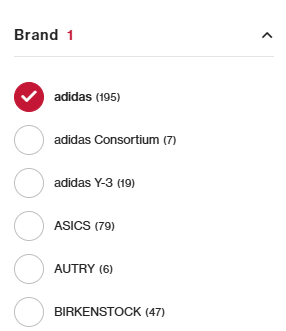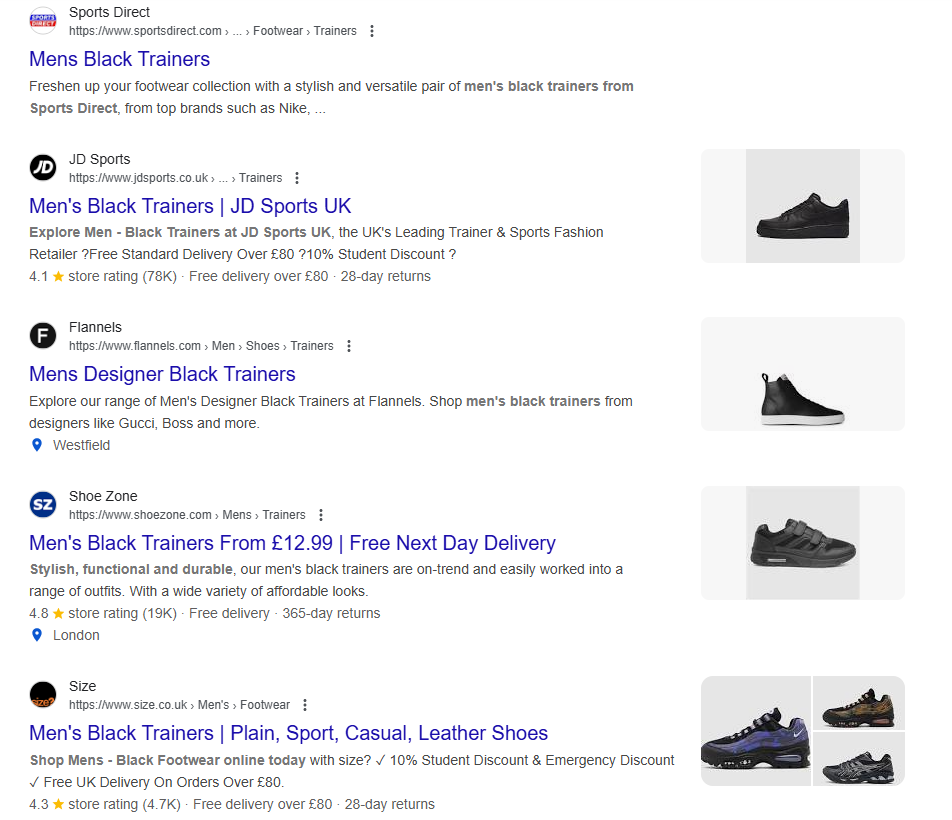Ecommerce SEO: Common Technical SEO Mistakes and Fixes for 2026


Introduction: Why Technical SEO Mistakes Quietly Kill E-commerce Growth
Many e-commerce websites focus heavily on content and backlinks, but if their technical SEO fundamentals are not in place, these investments will not deliver on their potential. E-commerce websites are uniquely positioned to face a myriad of problems that are less likely to affect lead-generation websites.
From faceted navigation errors to URL duplication to internal linking, seemingly minor mistakes can be hidden within a website that feels flawless from a user’s perspective, yet be the cause of serious crawlability and visibility issues.
In this article, we’ll unpack the most common technical SEO mistakes we see on e-commerce websites and more importantly, how to fix them.
Faceted Navigation: The Double-Edged Sword
Faceted navigation allows users to filter products by attributes such as size, color, or brand, making it easier to find what they want.
However, if left unrestricted, filtering systems can create tens of thousands of unique URLs that add little to no value for search engines. This comes either in the form of highly similar pages with duplicate content that show essentially the same products or pages that show a very specific list of products that users are unlikely to ever conduct a targeted search for.
This can lead to crawl budget waste, index bloat, and missed opportunities for newly created or optimised pages to be surfaced - a key consideration in e-commerce where fresh products, new collaborations or seasonal product releases may be a key (and time-sensitive) strategy.
When search engines spend time crawling low-value or duplicate pages, they may overlook important content or fail to prioritize pages that actually drive traffic.
Additionally, unrestricted faceted URLs make it difficult to fully crawl a website, leaving issues like broken internal links, soft 404s, and duplicate title tags impossible to thoroughly detect.
To control crawl budget, it’s important to use meta robots nofollow directives strategically, meaning they should only be applied after at least two filters are selected, or when multiple values within the same filter are applied, ensuring that useful combinations remain crawlable.
Similarly, canonical tags can consolidate ranking signals and prevent indexing of duplicate filtered pages. Again, these should be applied selectively and only when more than two filters have been applied or two filters in the same category are selected.
The logic behind this, being when the page that is generated is a consequence of more than two filters being applied or two filters in the same category, the resulting URL will not have organic value.
To use the example of a website selling backpacks, significant numbers of users are not going to be searching “luggage and duffles” (two filterable options in the same category).

Similarly URLs generated when selecting three separate categories such as Blue, 17”, Duffle bags are unlikely to have significant levels of monthly searches as the query is too niche. In these instances, the resulting URLs from these filtering options should be canonicalised to the main category page as, because this page does not have organic potential we are instructing Google not to consider it an authoritative source and instead consolidate ranking signals to the main category page.
Over-restricting this though by introducing measures, such as canonicalizing every filtered page back to the main category, can suppress organic visibility for filtered pages with genuine search value, like “green backpacks.”
Maintaining a consistent facet order is also crucial: /trainers/blue/leather and /trainers/leather/blue should resolve to the same URL regardless of the order by which users have selected the filterable options, to avoid duplicate content issues.
Below are just a few examples of high-profile ecommerce websites showing different approaches to faceted navigation, some executed well, while others demonstrating opportunities for improvement
Faceted Navigation: Done Well
A website handling the canonical tags within their faceted navigation correctly is Offspring Trainers for the following reasons:
A ) Main Category Pages Use Absolute URLs With Self-Referencing Canonicals
Offspring set a strong foundation for their faceted nav by ensuring their main category pages use absolute URLs paired with self-referencing canonical tags. This approach confirms to search engines that each category page is the authoritative version of its own content.
https://www.offspring.co.uk/mens - Men’s Trainers page

B) Single-Filter Pages Use Self-Referencing Canonicals
With one filter applied the practice of self referencing canonical tags remains. This allows the page to compete in the SERPs for the corresponding phrase which in this case would be, “mens trainers size 8” which has a UK monthly search volume of 880
https://www.offspring.co.uk/mens?size=8 - Men’s Size 8 Trainers page

C) Pages With Multiple Same-Category Filters Point Canonically To The Main Category
However, when another filter is selected in the same category, the canonical changes to the category above. This is best practice because typically these pages won’t have organic value as users are unlikely to search for “Men’s Size 7 and Size 8 Trainers” or “Men’s Nike and Adidas Trainers”
https://www.offspring.co.uk/mens?size=7|8 - Men’s Size 7 & Size 8 Trainer page

D) Pages With Two Distinct Category Filters Use Self-Referencing Canonical
When two distinct filters are selected, such as Mens White Adidas Trainers, in many instances, the resulting pages will have organic value meaning the canonicals should change to become self-referencing.
https://www.offspring.co.uk/brand/adidas?colour=white&shop_by=his - “Men’s Adidas White Trainers” (MSV: 260)

E) Three-Category Filter Pages Are Typically Too Niche To Warrant Indexing
Therefore they should cannonicalise back to the main category page. We see this on the Offspring website where size, colour and brand are all selected to generate the following page:
https://www.offspring.co.uk/mens?brand=adidas&colour=red&size=8 - “Men’s Adidas Red Size 8 Trainers”

F) Pages That Can Be Accessed From The Top Nav & The Facet Still Resolve As The Same URL
When a filterable option also serves as a main landing page, some websites make the mistake of placing the same products under two different URLs. Offspring, for example, has a dedicated Adidas brand page accessible from the top navigation, as well as a filterable option within the faceted navigation. In both cases, the URL resolves to https://www.offspring.co.uk/mens?brand=adidas, which follows best practice.


G) Same URLs Resolve Regardless Of The Order Filterable Options Are Selected
If a unique URL is generated in accordance with the order by which all the different filterable options can be selected, huge complexities in terms of managing crawl budget and index bloat can arise.
For instance if, when a user selects a Brand option (ie Adidas) and then a Colour option e.g, (Purple) the URL that resolves is https://www.offspring.co.uk/mens?brand=adidas&colour=purple but when they select a Colour option before selecting Brand the URL that resolves is https://www.offspring.co.uk/mens?colour=purple&brand=adidas in Google’s eyes both pages are separate entities but display exactly the same products and are targeting the same search term, “mens purple adidas trainers”.
When we consider all the different URL possibilities, even on a small ecommerce website, the duplicate content, cannibalisation in the SERPs, inflated crawl budget and indexation issues that could be created are enormous.
Offspring avoids this by ensuring the same URL is generated regardless of the order by which the filters are selected.
Faceted Navigation: Alternatives
Another effective way to maximise organic visibility is to create dedicated sub-category pages for high-value search terms, while using canonical tags for filter-generated pages that don’t correspond to those dedicated pages.
For example, Gymshark has optimised subcategory pages for “long sleeve gym tops,” “muscle fit gym tops,” and “men’s gym tank tops,” all nested within their Men’s Gym Tops category.
When alternative filters, such as size, are applied to the Men’s Gym Tops page, the resulting pages canonicalise to the main Men’s Gym Tops page. This is because variations like “small men’s gym tops” or “medium men’s gym tops” have relatively low search volume and don’t warrant their own indexed pages.

This approach works well when high-value subcategories are easy to define. However, for large e-commerce sites with hundreds of potential filter combinations, manually deciding which pages to index and create dedicated landing pages for can become impractical.
That’s why a strategy of canonicalising filtered pages based on the number and type of filters applied is effective for most e-commerce sites. Webmasters can still create optimised landing pages where necessary, while ensuring other filtered pages still have the potential to compete in the SERPs, even without a dedicated landing page being strategically built.
Faceted Navigation: Opportunities
A) Overly restrictive filtering system
As discussed, the worst mistake a website can make when it comes to their facet navigation is to have no restrictions related to crawlability or indexation.
However in trying to avoid this, sometimes websites can be overly cautious and apply canonical tags, whenever a filter is selected, costing them the chance to appear in the SERPs for high volume phrases in the process. Schuh for instance cannonicalise their Men’s Black Trainers page to the Men’s
Trainers category page:
https://www.schuh.co.uk/trends/mens-trainers/?c=Black& - Men’s Black Trainers

Thus costing themselves the chance to appear in the SERPs for a keyword that generates 12.1K UK searches per month as they are instructing Google not to treat their Men’s Black Trainers page an authoritative source and instead consolidate ranking signals to: https://www.schuh.co.uk/trends/mens-trainers/.
First Page of Google SERPs for “men’s black trainers”:

With an authority score of 60 and 1.2 million backlinks, Schuh would have every chance of appearing at least above Shoe Zone and Size who both have authority scores in the fifties if they had a more robust canonicalisation policy within their faceted navigation.
Shopify Internal Linking Errors
Many ecommerce websites are built on Shopify and Shopify websites face unique internal linking challenges because product URLs are structured with /collections/ by default.
While the canonical version of a product URL excludes /collections/, internal links often continue pointing to the collection-based version. This creates two problems: first, there are effectively two live versions of each product page; second, the version receiving the majority of internal link equity may not match the canonical version that Google recognizes.
Evidence of this misalignment of canonical tags on product pages can be seen on State Bags’ website. Their Kane Double Pocket Backpack product page for instance loads with */collections/ in the URL slug but the canonical tag points to a version of the URL without it.

This problem is duplicated across all product URLs on the website, likely creating problems with indexation, crawlability and cannibalisation in SERPs.
Fixing this involves customizing theme templates to link directly to the canonical /products/ URL, using apps or scripts to rewrite links sitewide, and auditing internal links with tools such as Screaming Frog, Ahrefs, or Sitebulb. Correcting these errors ensures link equity flows to the intended URLs and that search engines index the correct pages.
Through looking at their robots.txt file we can see that Gymshark website has also been built on Shopify but they have taken the appropriate steps to address this issue, which we can see by examining the canonical tags of the Apex Seamless Tank page:

Empty Filter Parameters in URLs
Many ecommerce platforms generate faceted URLs using query parameters for filters like size, color, or brand. A common mistake is including filters in the URL even when no value is selected for example, for the URL for shoes page this would look like:
/collections/shoes?size=&color=&brand=
Even if your top-level category page lives at a URL such as */collections/shoes?size=&colour=&brand=, rather than the cleaner */collections/shoes, it is still problematic from an SEO standpoint.
If left unrestricted, URLs with empty query parameters are treated as distinct by search engines, even if the content is identical to */collections/shoes. This can lead to issues like duplicate content, diluted link equity and inconsistent canonical signals - all of which can weaken the SEO performance of what should be your website’s most important landing pages.
Using paramatised URLs full of empty filters also makes the page look like a filtered or secondary version, rather than the authoritative version of the category.
It also adds unnecessary complexity to the process of internal linking, reporting and interpreting crawl behaviour.
At ICS-digital, our suggested best practice is to use a clean, minimal URL for top-level category pages (e.g, */collections/shoes) and only append filter parameters when a user actively selects a filter. This helps search engines understand prioritise the main page, consolidates ranking signals and improves overall crawl efficiency
Poor Image Optimisation - Speed, Usability and CX Considerations
Images are central to the user experience on e-commerce websites, but poorly optimized images can hurt page speed and overall SEO performance.
Proper image SEO allows sites to rank in Google Images while keeping load times low.
To optimize images: select the right format (JPEG, PNG, SVG, WebP), scale images appropriately, compress file sizes, add descriptive alt text, include images in a sitemap, implement lazy loading, serve responsive images for different devices, and define explicit width and height attributes. Optimized images enhance user experience, improve search visibility, and reduce bounce rates.
Neglecting Structured Data - Missed eCommerce Opportunities
Structured Data helps search engines understand content and enhances search listings with results and AI Overviews.
Many e-commerce websites miss opportunities by failing to implement or keep on top of their product schema, review and rating schema, or breadcrumb schema, opportunities to improve click through rate and drive sales are missed.
Correctly implementing structured data allows key information such as price, availability, ratings and navigation paths to appear directly in search results. This improves trust, engagement and click through rates while helping search engines better understand your site’s hierarchy and content.
Conclusion
Even a well-designed e-commerce website can suffer from hidden technical SEO problems that significantly impact organic visibility. Businesses often invest heavily in content and backlinks, unaware that issues like faceted navigation, internal linking errors, and poor image or schema implementation are limiting their potential.
By identifying and fixing these technical issues, you can ensure that both on-page and off-page optimisations deliver maximum results. Here at ICS, our specialist in-house technical SEO team can diagnose these problems and implement solutions to help your website reach its full organic potential.
Similar Posts










